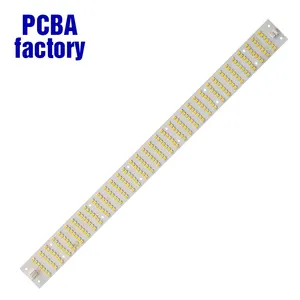
Wholesale Led Lighting Pcb Board Smd 3535 5730 3w 5w 7w 9w 12w 15w 18w Led Light Pcb Board Design Led Bulb Light Board


Durable High Power Led Aluminum Electronic Circuit Pcb 12w 15w 18w 24w 30w Long Led Light Pcb Board Oem Pcb Pcba Supplier





















LED light circuit boards are at the heart of modern lighting solutions, providing the necessary infrastructure for LED lights to operate efficiently. These circuit boards are designed to offer a stable platform for LEDs, ensuring optimal performance and longevity. As a critical component in a wide array of lighting applications, LED circuit boards are tailored to meet the diverse needs of various environments.
There are several types of LED PCBs, each serving a specific purpose. From single-layered designs for basic lighting needs to multi-layered boards for complex lighting systems, the variety ensures that there is a suitable board for every application. These circuit boards are utilized in a range of settings, including but not limited to, residential lighting, commercial spaces, industrial environments, and outdoor areas requiring robust illumination.
The construction of LED light circuit boards involves materials that support heat dissipation, a crucial factor for the longevity of LED lights. Typically, aluminum is a preferred base material due to its excellent thermal conductivity and durability. The boards also feature conductive pathways, components, and other elements etched onto laminated sheets, which are then assembled to create the final product.
The advantages of using LED PCBs are manifold. They offer enhanced energy efficiency, contributing to lower operational costs over time. The design of these circuit boards allows for better heat dissipation, which translates to a longer lifespan for the LEDs. Additionally, the use of recyclable materials in their manufacture aligns with eco-friendly practices, reducing the environmental impact.
Selecting the appropriate LED light board is crucial for any lighting project. Factors such as the intensity of light required, the intended application area, and the desired lifespan should guide the selection process. It is important to consider the compatibility of the circuit board with the LEDs being used to ensure seamless integration and operation.
Sustainability is a key consideration in the production of LED lighting boards. Manufacturers are increasingly focusing on using materials that are not only conducive to better performance but also environmentally friendly. This commitment to sustainability is evident in the recyclability of the materials used, which helps in minimizing the carbon footprint associated with lighting products.